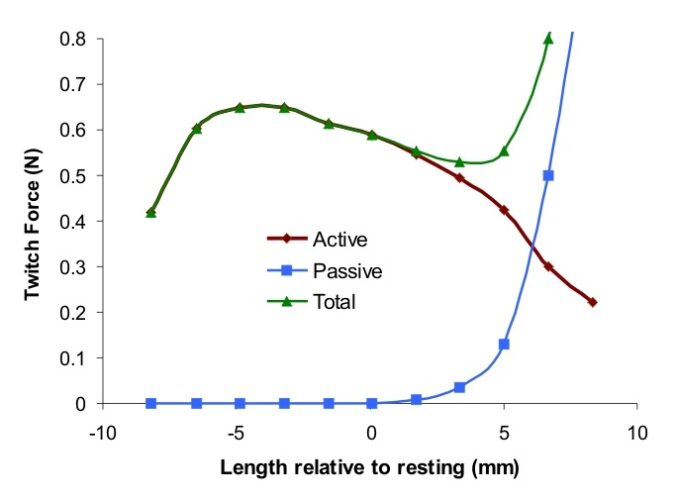Length-tension relationship refers to the overlapping of microfilaments in a sarcomere. Heads of the myosin proteins need to grab the binding sites of actin proteins. There are two halves of one sarcomere. During muscle contraction, each side grabs a different actin molecule, then they pull each actin closer together. This happens with a BUNCH of little myosin heads and actin binding sites at the same time.
Now if the actin molecules are too far apart, there are fewer myosin heads to latch onto fewer actin binding sites. The amount of active tension the muscle can actively produce on its own is then lower. There are simply fewer molecules working. So longer lengths mean less active tension.
A similar thing happens if the muscle gets too short; you just run out of room to contract.
This portion of the length-tension relationship defines the active properties of muscles. Muscles, though, can also produce passive tension.
As length increases, passive tension also increases. This is due to elastic properties of muscle, such as the tendons and surrounding connective tissue. These tissues stretch, just like a rubber band, and then enough force is produced to overcome the active tension deficit that occurs when a muscle lengthens.
Above is a graph of the relationship.

Add some color to this commentary.